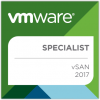
Reading Time: 10 minutesNow that both Microsoft and VMware have officially announced the new released of their virtualization products it’s possible to make some kind of comparison between Hyper-V available on Windows Server 2019 and vSphere 6.7 (like I’ve done some years ago with the Microsoft Hyper-V 2016 vs. VMware vSphere 6.5 article). Comparing two different product is not so easy, also if they are released closed one each other (at least in the same year). You need to found some homogenous aspects to make the comparison, at least at the technical level (but as written, it’s not so […]











